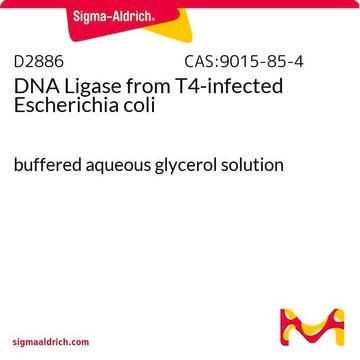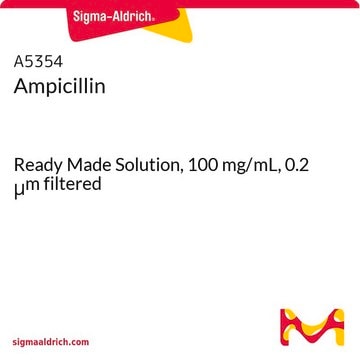LIG2
QuickLink™ DNA Ligation Kit
joins blunt-end and sticky-end DNA fragments
Sinonimo/i:
DNA Ligation Kit, Ligation Kit
About This Item
Prodotti consigliati
Grado
for molecular biology
Livello qualitativo
Forma fisica
liquid
impiego
kit sufficient for 50 ligation reactions
tecniche
molecular cloning: suitable
Condizioni di spedizione
dry ice
Temperatura di conservazione
−70°C
Categorie correlate
Descrizione generale
Applicazioni
- Joining blunt or cohesive-end fragments of DNA into a cloning vector
- Recircularization of linear DNA
- Formation of concatamers
- dsDNA nick repair
Caratteristiche e vantaggi
- Fast 5 minutes ligation
- High ligation efficiency
- Room temperature reactions – no cooling required
- Perform bacterial transformation with the reaction mixture
Componenti
- 500uL 2X Ligation Buffer A (L9537)
- 100uL 5X Ligation Buffer B (L9662)
- 250 units T4 DNA Ligase (D2886) in 50% glycerol with 10 mM Tris-HCl (pH 7.5) 50 mM KCl, and 1 mM DTT
Principio
Note legali
Prodotti correlati
Codice della classe di stoccaggio
10 - Combustible liquids
Punto d’infiammabilità (°F)
Not applicable
Punto d’infiammabilità (°C)
Not applicable
Certificati d'analisi (COA)
Cerca il Certificati d'analisi (COA) digitando il numero di lotto/batch corrispondente. I numeri di lotto o di batch sono stampati sull'etichetta dei prodotti dopo la parola ‘Lotto’ o ‘Batch’.
Possiedi già questo prodotto?
I documenti relativi ai prodotti acquistati recentemente sono disponibili nell’Archivio dei documenti.
Protocolli
T4 DNA ligase is used for the joining of DNA molecules with compatible cohesive (sticky) termini, joining of blunt ended double stranded DNA molecules
Il team dei nostri ricercatori vanta grande esperienza in tutte le aree della ricerca quali Life Science, scienza dei materiali, sintesi chimica, cromatografia, discipline analitiche, ecc..
Contatta l'Assistenza Tecnica.








